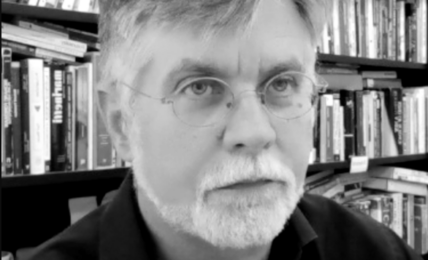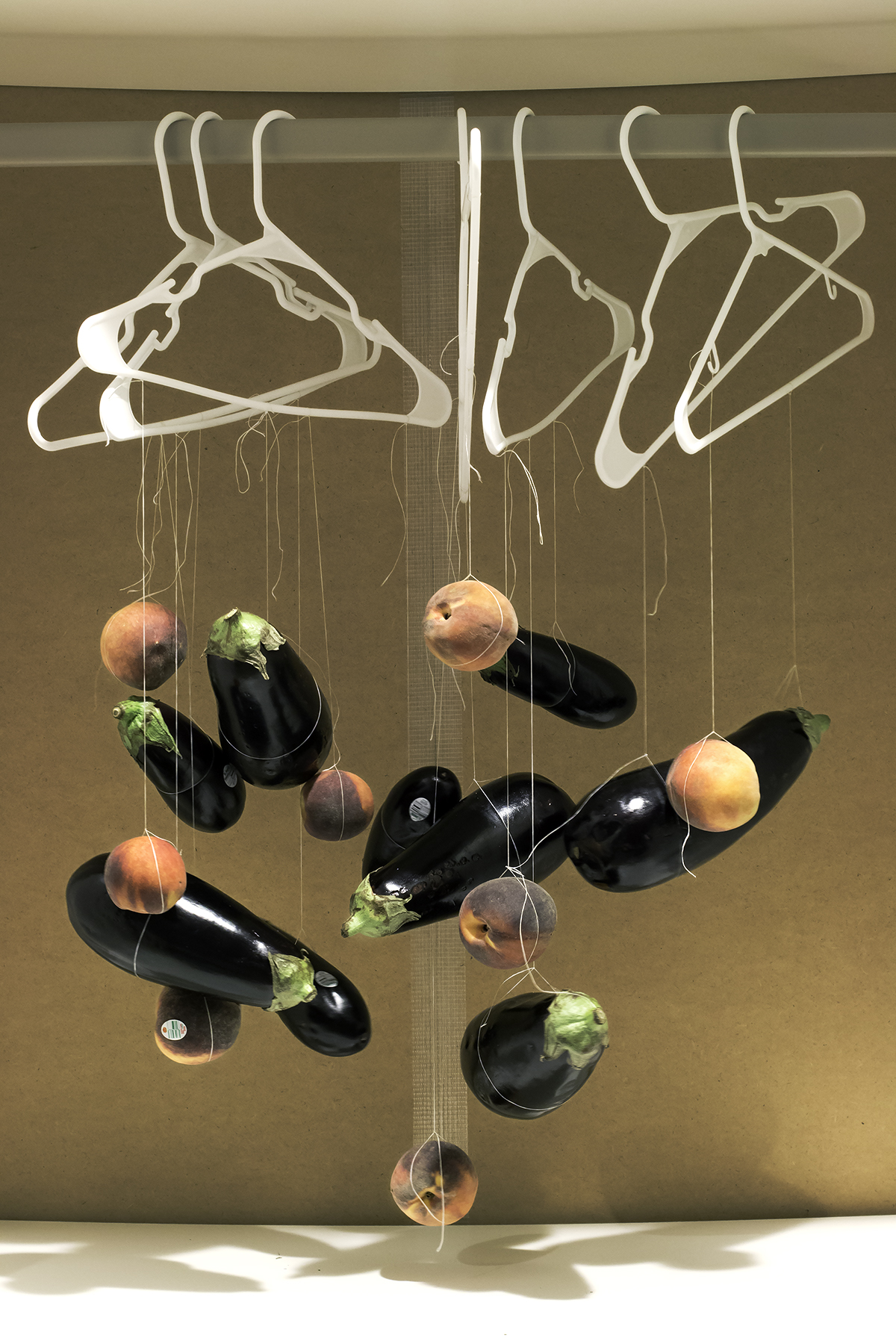Timo Kahlen’s sound and visual work explores unusual mediums, such as wind, steam, light, vibration, sound, and more to convey global concepts. Throughout his career of more than 25 years, Kahlen’s experimentation with noise and media art have allowed him to participate in over 150 solo and collaborative gallery showings. He has received nominations for the Kahnweiler Prize for Sculpture in 2001 and the German national Sound Art Prize in 2006. He has also two published catalogs of his pieces, 2010’s Noise and Beauty and 2014’s Earcatcher. Currently, Kahlen teaches, lives, and works in Berlin.
In his own words, migrtaion is “the sound of displacement.” In experiencing the piece, viewers become displaced in their inability to form a cohesion through unconscious migration; a dissonance that is further heightened by the almost disturbing audio. View Timo Kahlen’s migrtaion here.
:::
DigA: The interactive aspect of migrtaion allows the viewer to become the composer, arranging letters and creating dissonant “sentences” when they engage with the piece. Through these interactions, the meaning and emotionality of migration take shape. What is the intended role of the user in migrtaion, and what do you hope to convey as they compose their own migrtaion story?
TK: I am – metaphorically – putting the viewer into an uncomfortable position as he engages with the topic. Even the spelling of the work’s title is all wrong.
DigA: As a sound and digital artist, how do you go about creating a work that simultaneously enables each viewer and listener to have a distinctly unique experience, while also ensuring that the underlying meaning is understood? Or, perhaps, is that meaning fluid and user-specific?
TK: In this interactive flash projection with multiple layers of embedded sound and visual fragments, the user experience will always be fluid and user-specific – depending on the viewer’s previous digital experience, knowledge and beliefs, and on his individual approach when investigating and maneuvering throughout the work with the cursor. On the direction and speed of the cursor’s movement, on intentional pauses, on clicking at or hovering above the interactive projection. In fact, the same individual viewer might have two (or more) completely diverse experiences, if he decides to restart the work and to have another look. The work creates an interactive framework that leaves ample space for the viewer’s own perception and thought. It does not provide answers; it raises questions.
DigA: The use of language in migrtaion is disorienting. The words and letters seem familiar, yet they become jumbled as the user interacts with the piece. Do you find it useful to disorient the users/viewers in your work?
TK: In fact, a feeling of disorientation, of misunderstanding and dissonance, of a loss of words and of falling out of tune is at the core of how the viewer will experience the work migrtaion. I have created (a fragment of) a mirror image of what migrants experience in their lives. In fact, it will be quite difficult for the viewer to decipher the second, hidden layer of text beneath the visible one, and to re-construct the harmony, melody, and rhythm of the ‘merry-go-round’ tune at the base of this work.
DigA: migrtaion possesses several dissonances. The sounds create jarring contrasts between music box-esque clips and television static, and the child-like font contrasts with the content of the composition. How do the dimensions of sound in migrtaion relate to your concept of displacement? Can you speak more about the motifs of childhood within the piece?
TK: Sound is a very powerful medium as it evokes, sculpts or recaptures emotions, experiences and sceneries that the viewer might have had in his lifetime. In migrtaion, I have broken down an ‘innocent’ merry-go-round tune into fragments. However, the tune was recorded from a broken, grinding music box and disassembled to form a pool of short acoustic utterances which – seen in unison – can be rearranged by the viewer to form a new kind of harmony. Yet, there is a dirty, defunct quality to the sounds, and a series of sudden, startling, loud acoustic interjections of white noise, which make it obvious that something has been broken, disrupted, fallen out of tune, and torn out of place. Not so much a merry-go-round as expected.
Handwriting carries a strong expression of individual character. It is both personal and ephemeral – and subject to change – which are interesting aspects of a digital work of art, if you think about it. Of course, the handwritten font of the work heightens contrasts, but is also an expression of individuality and vulnerability as two core topics of the work. Beyond that, the hand-written text has a number of other functions. One of them is to draw the viewer in, to lure his interest in a difficult topic by providing a means of identification with the author and subject.
DigA: migration is part of the human experience, but it seems to be demonized in the news more and more with growing global anti-immigration rhetoric. How do you view migrtaion within the contemporary sociopolitical context?
TK: I believe in human rights, and I have a strong sense of tolerance and empathy for what individuals need, what they are forced to endure or what they aspire to be. In the interactive work migrtaion, I am questioning a purely rational approach to immigration. I am provoking empathy for individual stories and their often dramatic experiences and humanitarian needs, as millions continue on their odyssey in the pursuit of happiness and dignity.



